Do you have a wasp nest?
Quebec is home to a variety of wasps, some of which are more common than others. These insects play an important role in the ecosystem, but can also be a nuisance to humans.
Wasp nests can be built in a variety of locations, such as underground, in tree cavities, or even inside buildings. Wasp stings are painful and can cause allergic reactions in some people. It is important to exercise caution and avoid disturbing the nests.
Wasp extermination: a task for professionals
Wasp extermination is a task that must be carried out by equipped and trained professionals. Trying to destroy a wasp nest yourself can be dangerous and result in multiple stings.
Our wasp extermination services
1. Free evaluation
We inspect your property to locate wasp nests and offer you a personalized action plan.
2. Targeted treatment
We use treatment methods adapted to each situation, favoring the least invasive solutions possible.
3. Prevention tips
We give you tips to prevent new wasp infestations.
Species of Wasps in Quebec
Yellow Jacket Wasp
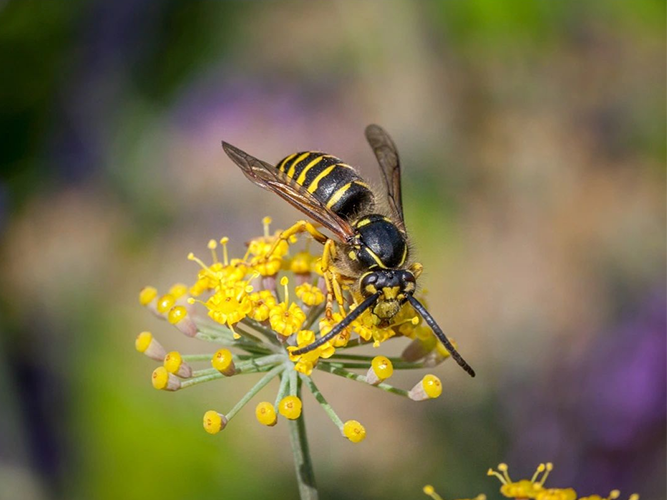
Yellow jacket wasps are social insects known for their bright black and yellow colors. They build nests in the ground or in cavities and can become aggressive if their nest is threatened.
Northern Paper Wasp
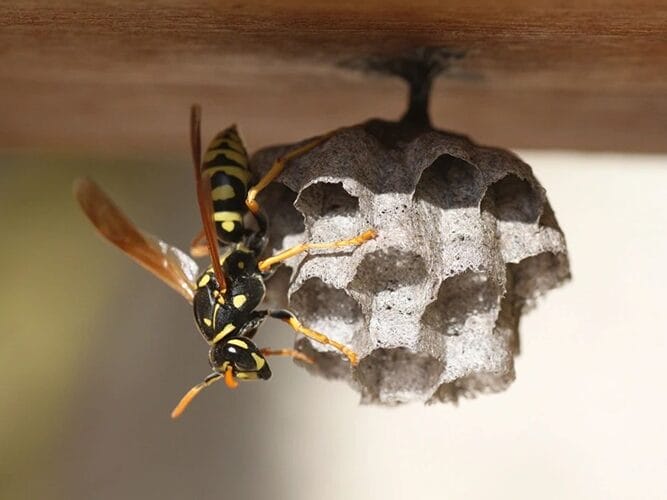
Paper wasps build their nests with paper pulp made from plant fibers. Although they may sometimes be considered pests, they are essential to the balance of our environment.
Mason Wasp
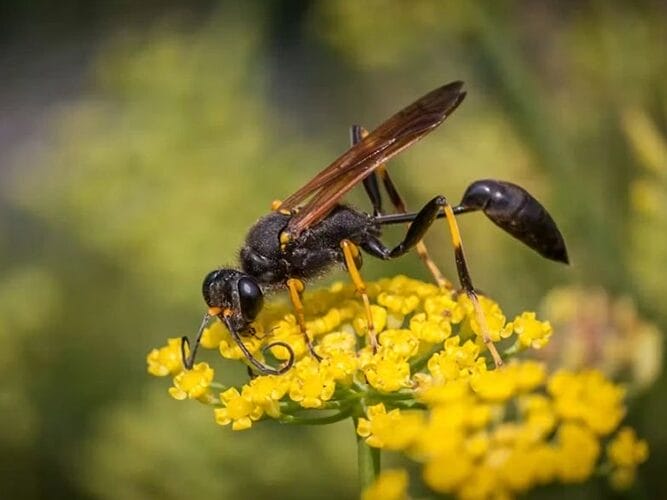
The mason wasp, also called the potter wasp or black wasp, is a solitary wasp that builds its nest from mud, which it shapes with its mandibles. These nests, often in the shape of small urns, are generally attached to vertical surfaces such as walls, beams or rocks.
Sand Wasp
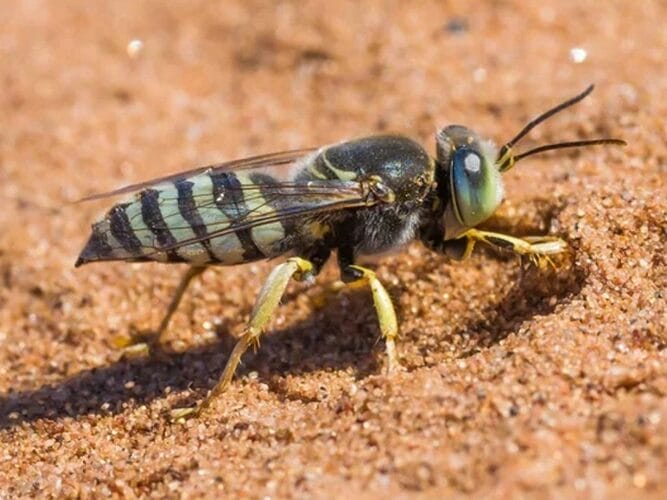
The sand wasp, also called the ”digger wasp”, is a solitary insect that is frequently found in Quebec, particularly in sandy regions. Unlike social wasps that live in colonies and build large nests, sand wasps dig small tunnels in the ground to lay their eggs.
Blue Mud Wasp
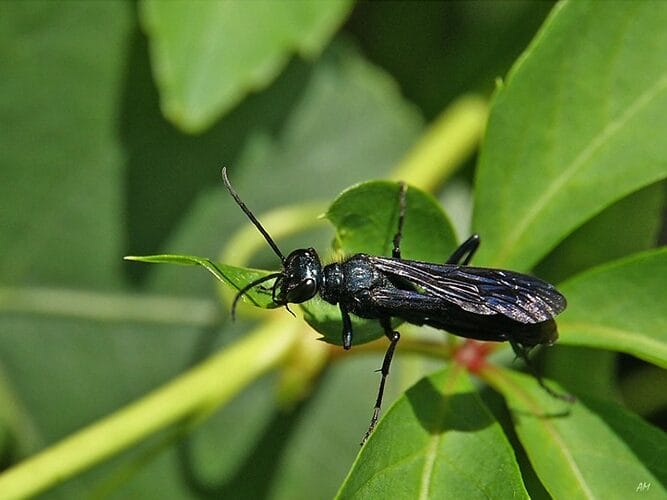
The blue mud wasp (Chalybion californicum) has an iridescent blue-black metallic body and unlike the social wasps we know, the blue potter is solitary. It uses mud to build its nest, which it shapes into a pot.
Hornet
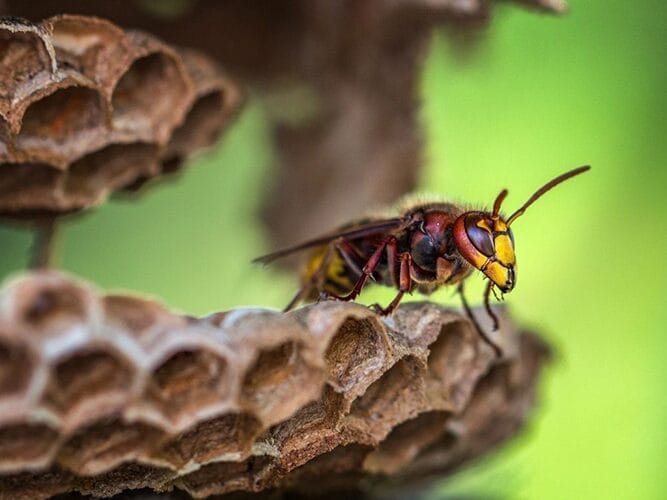
The hornet is large and brown and yellow in color. It builds its nests in tree cavities, attics or walls. Hornet nests can grow large and cause damage to structures. Hornet stings are more painful than wasp stings.
